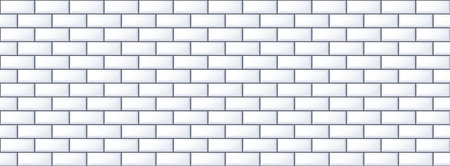Introduction to Exposed Brick in British Homes
There’s something undeniably charming about exposed brickwork in British homes. Across the UK, original brick features are being lovingly revealed and restored by homeowners eager to celebrate the heritage of their properties. The appeal lies not only in the visual warmth and texture that exposed bricks bring but also in their connection to local history and craftsmanship. Many Victorian, Edwardian, and even mid-century houses were constructed with robust, characterful brickwork—hidden for decades beneath layers of plaster or paint as tastes and fashions shifted. Today, however, more and more people are rediscovering these architectural gems. Exposing original bricks offers a tangible link to a home’s past, adding authenticity and a sense of place that is uniquely British. Whether you’re after that rustic cottage feel or an urban industrial edge, uncovering your property’s brickwork can transform a space and honour its story.
Assessing Your Brickwork: What to Look Out For
Before you start stripping back plaster or paint to expose the original brickwork in your British home, it’s vital to assess the current condition of your internal walls. Many properties across the UK, especially those built before the mid-20th century, may have hidden issues that could impact both the aesthetics and structural integrity of your exposed brick project. Here’s a practical guide on what to look for and how to evaluate whether your wall is a good candidate for exposure.
Common Issues in British Brick Walls
British homes are often susceptible to certain problems due to age, building materials, and our damp climate. Watch out for these typical concerns:
| Issue | What It Looks Like | Why It Matters |
|---|---|---|
| Damp | Patches of darker colour, mould, musty smell | Can cause brick and mortar deterioration; needs addressing before exposing brickwork |
| Efflorescence | White powdery deposits on brick surface | Indicates moisture movement; can signal underlying water ingress issues |
| Poor Pointing | Crumbly or missing mortar between bricks | Affects stability; will need repointing for both safety and appearance |
| Spalling Bricks | Bricks flaking, cracking, or breaking apart | Usually caused by frost or trapped moisture; may require replacement bricks |
| Paint Layers/Sealants | Thick coatings or visible paint residues | Might conceal damage; removal can be laborious and reveal hidden issues |
Initial Inspection Steps for Homeowners
- Visual Check: Examine all accessible brick surfaces for signs of damp, efflorescence, and crumbling mortar.
- Tapping Test: Gently tap bricks with a screwdriver handle – hollow sounds may indicate voids or loose bricks.
- Mould & Odour: Smell for mustiness and inspect for black mould spots, particularly near floors or external walls.
- Mortar Joints: Scrape gently at the mortar – if it powders easily, repointing is likely needed.
- Check External Walls: Problems inside often reflect issues outside – look at the corresponding external wall for cracks or water staining.
When to Seek Professional Advice?
If you discover significant damp patches, extensive efflorescence, or large areas of failing mortar during your assessment, it’s sensible to consult a surveyor or specialist. These issues can sometimes point to bigger structural or moisture ingress problems best handled by professionals before any DIY exposure work begins.
This careful evaluation stage ensures your DIY exposed brick project starts on solid ground and avoids costly surprises down the line.

3. Tools and Materials Needed for Exposing Brick
Before embarking on your exposed brick project, having the right tools and materials is essential to ensure both safety and success. Most of these items are readily available at popular UK DIY retailers such as B&Q, Wickes, or Screwfix.
Essential Tools
- Hammer and Cold Chisel: For carefully removing plaster without damaging the underlying brickwork.
- Scrapers: A sturdy paint or wallpaper scraper helps lift off old adhesive, render, or stubborn paint remnants.
- Wire Brush (Manual or Drill Attachment): Useful for cleaning loose mortar and debris from the bricks’ surface.
- Dustpan and Brush: Keeping your workspace tidy as you go will help maintain visibility and safety.
Protective Gear
- Dust Mask or Respirator: Exposing brick can generate a lot of fine dust; a mask rated to FFP2 or better is recommended.
- Safety Goggles: Protect your eyes from flying debris during chiselling or brushing.
- Heavy-Duty Gloves: Essential for hand protection when dealing with sharp edges or rough surfaces.
Recommended Materials
- PVA Sealer: After cleaning, applying a PVA solution will help bind any remaining dust and prepare the surface for further treatment.
- Lime Mortar (if repointing is needed): Many older British homes use lime-based mortar rather than cement; this can be sourced at heritage building suppliers and larger DIY stores.
- Masonry Cleaner: Choose a gentle, acid-free cleaner specifically designed for internal brickwork—avoid anything too harsh that may damage the bricks.
Easily Sourced Locally
The good news is that all these items are stocked by most high-street DIY retailers across the UK. Staff are usually knowledgeable about local building traditions, so don’t hesitate to ask for advice on suitable products, especially if your property is period or listed. Ensuring you start with the correct kit will make the job safer, neater, and more satisfying in the long run.
4. Step-by-Step: Exposing and Cleaning Your Brickwork
Revealing your home’s original brickwork is a rewarding DIY project, but it requires patience and careful technique to avoid damaging both the bricks and yourself. Here’s a straightforward guide tailored for British homeowners, covering everything from safe plaster removal to responsible rubble disposal.
Step 1: Preparing the Area
- Clear furniture and cover floors with dust sheets to protect against debris.
- Wear safety goggles, gloves, a dust mask, and sturdy clothing to safeguard yourself from dust and sharp edges.
- If possible, open windows or use a fan for proper ventilation.
Step 2: Removing Plaster or Render
- Using a utility knife, score along the edge of the wall to separate plaster from skirting boards and adjacent surfaces.
- With a hammer and bolster chisel, gently tap at an exposed corner to loosen the plaster. Work slowly to avoid chipping the bricks beneath.
- Continue prising off sections by hand. For stubborn areas, use a multi-tool with a masonry blade on low speed.
- Avoid using power tools that create excessive vibration; they may crack or damage older brickwork.
Step 3: Cleaning the Bricks
- Brush away loose dust and debris with a stiff-bristled brush.
- For more thorough cleaning, lightly dampen the bricks with water (avoid soaking), then scrub gently using warm soapy water and a sponge. Avoid harsh chemical cleaners which can erode historic mortar.
- If paint remains, use an eco-friendly paint remover suitable for masonry—always test in a discreet area first.
- Allow bricks to dry naturally before assessing their condition for any further restoration work.
Step 4: Disposing of Rubble Responsibly
Disposing of construction waste in the UK must be done according to local council regulations. Here’s a brief comparison:
| Disposal Method | Description | Key Considerations |
|---|---|---|
| Council Tip/Recycling Centre | Most councils accept building rubble in limited amounts from residents. | Check weight/volume limits; ID/proof of address usually required. |
| Skip Hire | Larger quantities can be disposed of via hired skips placed on your property. | You may need a permit if the skip is on public land; separate rubble from general waste for recycling. |
| Bags for Collection | Some councils offer special sacks for small amounts of rubble collection. | Book in advance; check if fees apply in your area. |
Never dispose of building waste in household bins or fly-tip—fines can be substantial. For detailed guidance, consult your local council’s website or environmental services team. By following these steps, you’ll not only reveal beautiful brickwork but also respect community standards and environmental responsibilities.
5. Restoring and Sealing: Finishing Touches for British Climate
Once your brickwork is exposed and cleaned, restoration and protection are critical to ensure long-lasting results, especially given Britain’s notoriously changeable weather. Here’s a practical guide tailored to UK homes.
Repointing: Revitalising Mortar Joints
Old or crumbling mortar should be carefully removed to a depth of around 15-20mm using hand tools to avoid damaging the bricks. The process, known as repointing, not only improves appearance but also strengthens structural integrity and keeps out moisture. Take your time here—rushed work often leads to patchy results and water ingress.
Choosing the Right Lime-Based Mortar
For most period homes in Britain, it’s best to use lime-based mortars rather than cement-based alternatives. Lime mortar is breathable, allowing trapped moisture to evaporate rather than become trapped within the wall—a common issue with harder modern mortars that can lead to spalling bricks. Ready-mixed hydraulic lime mortars (NHL) suit most external applications and come in various strengths; NHL 3.5 is a safe all-rounder for typical UK weather.
Weatherproofing and Sealing Exposed Brickwork
The British climate brings rain, frost, and damp—so protecting your newly exposed brick is essential. Avoid impermeable sealants or varnishes; these can trap moisture and accelerate brick decay. Instead, opt for breathable masonry sealers designed for historic properties. Silane/siloxane-based treatments penetrate the brick surface, offering water resistance while letting vapour escape. Always test on a discreet area first to ensure there’s no colour change or residue.
Top Tips for Lasting Results
- Work in mild, dry conditions if possible—cold or wet weather slows curing and can compromise mortar performance.
- Maintain regular checks after heavy rainfall or frosts to spot any early issues with pointing or sealing.
- If unsure about materials or techniques, consult local conservation officers or experienced tradespeople familiar with British heritage homes.
By taking these careful steps, you’ll help your exposed brickwork withstand everything the British climate throws at it—while preserving its character for years to come.
6. Common Pitfalls and How to Avoid Them
While DIY exposed brickwork can add character and value to your British home, there are several common mistakes that homeowners frequently encounter. Recognising these pitfalls early will help you achieve a professional finish without risking permanent damage to your property.
Damaging the Brick Surface
One of the most frequent errors is using overly aggressive tools or techniques when removing plaster or paint. Power tools, such as angle grinders, can easily chip or scar bricks, especially in older properties where bricks are softer. To avoid this, always start with gentler hand tools like a hammer and bolster chisel. For stubborn areas, consider a chemical paint stripper thats suitable for masonry—always test on a small area first.
Removing Original Lime Mortar
Many traditional British homes use lime mortar, which is essential for breathability and moisture control. Accidentally hacking out or replacing lime mortar with modern cement-based products can trap moisture and lead to brick decay. If you suspect your property uses lime mortar, avoid mechanical removal methods and instead gently rake out loose joints by hand. Repoint only with an appropriate lime-based mix; local builders’ merchants or heritage specialists can advise on the right blend for your region.
Overlooking Structural Concerns
Exposing internal brickwork may reveal cracks or signs of previous repairs that could indicate structural issues. If you notice anything concerning—such as stepped cracking or bulging—pause your project and consult a local structural engineer or a conservation specialist. Many UK heritage bodies offer free advice for listed buildings or those within conservation areas.
Poor Cleaning Methods
Avoid sandblasting or high-pressure washing, as these methods can erode brick faces and force water into the wall. Instead, use a stiff bristle brush and minimal water. Specialist brick cleaning solutions are available at most UK DIY stores; ensure they’re suitable for your type of brick before applying.
Ignoring Local Regulations
If your property is listed or located within a conservation area, exposing internal brickwork may require planning consent. Always check with your local council’s planning office before starting work to avoid legal complications down the line.
Where to Seek Specialist Advice
If in doubt, seek guidance from organisations such as The Society for the Protection of Ancient Buildings (SPAB) or Historic England. Local building supply shops and heritage masons often have invaluable knowledge about regional materials and techniques.
Taking the time to understand these common pitfalls and seeking expert advice when needed ensures your exposed brick project not only looks stunning but also respects the integrity of your British home.
7. Maintaining Your Exposed Brickwork Over Time
Now that your brickwork is proudly on display, keeping it in top condition is an ongoing task for any British homeowner. Regular maintenance not only preserves the aesthetic appeal of exposed bricks but also ensures their longevity against our famously unpredictable weather. Below are some practical tips to help you care for your restored brickwork.
Regular Cleaning
Dust and dirt can accumulate quickly, especially in urban environments. Use a soft brush or vacuum with a brush attachment to gently remove debris from the surface and mortar joints. For more stubborn marks, a damp cloth should suffice—avoid harsh chemicals, as they may damage the brick or mortar.
Managing Moisture
British homes are no strangers to damp. Check regularly for signs of moisture ingress, such as dark patches, flaking, or mould growth. Ensure any pointing or sealing work is intact and address leaks or condensation issues promptly. Consider installing a breathable sealant if your home is particularly prone to moisture, but always opt for products suitable for period properties to avoid trapping water within the wall.
Spotting Problems Early
Keep an eye out for crumbling mortar, efflorescence (white salt deposits), or loose bricks—these are early indicators that your exposed brick needs attention. Addressing small issues quickly can prevent costly repairs down the line. If you notice significant cracking or movement, consult a professional to assess structural integrity.
Routine Inspections
Set a schedule to inspect your brickwork at least twice a year, ideally in spring and autumn. This allows you to catch seasonal changes and prepare for harsher winter conditions. Look out for signs of weathering and make minor repairs before they escalate.
Ongoing Protection Tips
- Avoid hanging heavy objects directly on exposed brick walls without proper fixings.
- If redecorating nearby, cover the brick to protect it from paint splashes or abrasive materials.
- Monitor humidity levels indoors; using a dehumidifier can help prevent damp problems.
When to Seek Help
If youre ever unsure about the condition of your exposed brickwork or spot potential structural concerns, its wise to consult with a local builder experienced with heritage properties. Remember, preserving original features adds both character and value to your British home when cared for properly.

